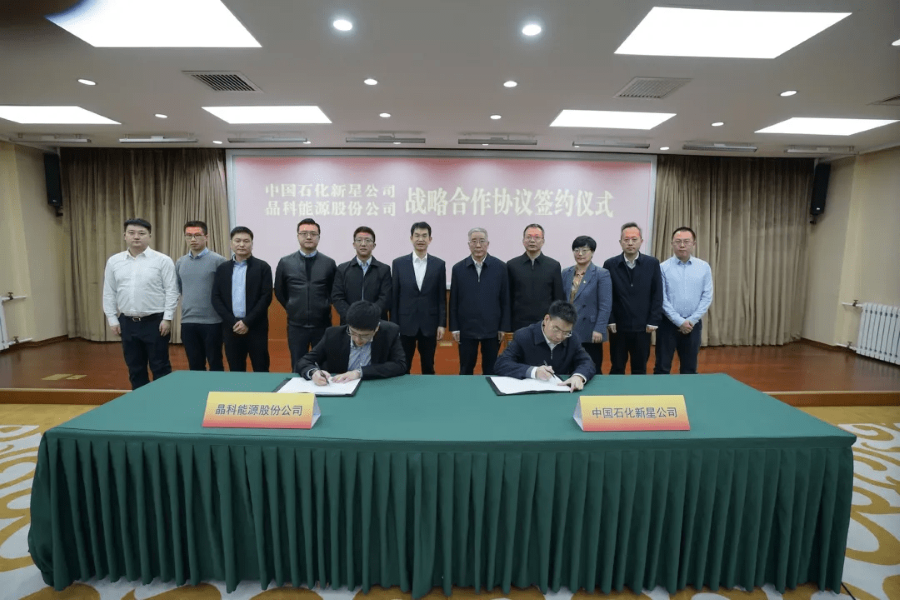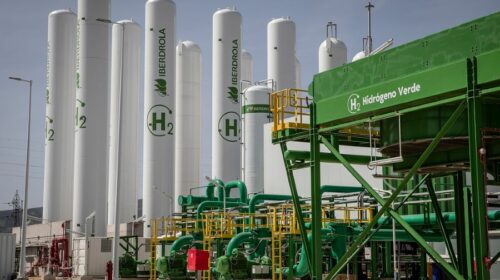JinkoSolar Trumpets Hydrogen Alliance With State-Run Behemoth Sinopec

Company will supply solar panels to power a demonstration project to manufacture clean-burning hydrogen fuel
Key Takeaways:
- JinkoSolar has announced its solar panels will power a demonstration project with Sinopec to produce clean-burning hydrogen fuel
- Tie-up could provide new future revenue, but looks more like an important PR exercise to show JinkoSolar is helping Beijing to achieve its carbon-reduction targets
By Doug Young
As we head in 2022, a new announcement from solar panel giant JinkoSolar Holding Co. Ltd. (JKS.US) looks interesting as much for its format as its content. The actual announcement involves the company’s participation in a pilot project with oil refining major Sinopec (0386.HK) for the production of hydrogen fuel using solar-generated electricity.
We’ll look more closely at the actual announcement in the second half of this space, as it’s an interesting project that’s part of China’s ongoing drive to develop more clean energy sources as it tries to achieve peak carbon emissions by 2030 and go carbon neutral by 2060. Hydrogen fuel could help to achieve that by powering a new generation of cars, complementing the much higher-profile electric vehicles that also negate the need for carbon-emitting fossil fuels.
We’ll begin by looking at the actual Chinese announcement as posted on the company’s website last Wednesday. For anyone wanting to get a much better view of the real news in an easier-to-understand English format, we would recommend checking out the related report published on PVTech’s website the same day.
Returning to the announcement, it’s quite telling that the word “hydrogen” isn’t even used until the third paragraph, and even then, it’s only mentioned in passing as one of many applications for solar energy. The next appearance of “hydrogen” doesn’t come until the next-to-last paragraph of the six-paragraph announcement, when we finally learn what the news is.
Instead of news about what the pair of companies will do, the announcement’s first four paragraphs are packed with other things, starting with the fact that JinkoSolar has formed an unspecified “strategic partnership” with the massive Sinopec. That’s followed by names of the JinkoSolar and Sinopec officials who attended a signing ceremony in Beijing on Dec. 28, including JinkoSolar’s CEO Chen Kangping and a top Sinopec official from its Xinxing unit that’s taking part in the alliance.
That’s followed by a photo of the signing, mention of China’s carbon-reduction goals, and many adjectives and other words about just how important the tie-up is. Then we learn about JinkoSolar’s many achievements in new energy, and get a vague quote from Chen Kangping about the importance of the alliance. A few details on the actual tie-up come at the very end, almost as an afterthought.
In this instance, it’s quite easy to read between the lines and see the announcement is written this way as part of a public relations exercise to show how JinkoSolar is doing its part to help China achieve its new energy goals.
That comes in two parts. First, the company is showing that it’s working with China’s state-owned sector by tying up with a mammoth like Sinopec. And perhaps more important, it’s trumpeting its contributions to the development of hydrogen power, which has been specifically mentioned as a priority for development in the nation’s 14th Five Year Plan that runs from 2021 to 2025.
We’ve stressed time and again the importance of syncing with government priorities to doing successful business in China. But as JinkoSolar is showing with this announcement, it’s also important to trumpet those efforts in this kind of announcement, often subordinating what may be the real news to this kind of pageantry.
No-carbon hydrogen fuel
The announcement seemed to have the desired fact, with JinkoSolar shares jumping 8.3% the day of the news and holding on to most of those gains in the next two trading days.
All that said, we’ll look next at the actual announcement, which is relatively straightforward. It will see JinkoSolar provide its solar panels to a pilot project led by Sinopec to make the special form of hydrogen needed to power hydrogen fuel cells. Hydrogen-powered vehicles are extremely environmentally friendly, as they mostly produce water as their main byproduct.
The problem is that production of hydrogen fuel has always been extremely energy-intensive, creating a key obstacle to its development as a clean energy fuel source. Using fossil fuel electricity to create hydrogen fuel would be counterproductive in reducing carbon emissions. But using electricity created by solar or other non-carbon sources would be much more acceptable.
In this case, the target for the collaboration is most likely a massive 3 billion yuan ($472 million) hydrogen fuel plant being built by Sinopec in China’s Xinjjiang region that began construction in early December. That plant, billed as the world’s biggest green hydrogen facility, will ultimately have capacity to produce 20,000 tons of the fuel annually.
JinkoSolar is probably hoping the lift from the news will be the start of a big rally for its shares in 2022. The company’s stock struggled last year, losing about a third of its value, as solar panel makers got hit by soaring prices for the silicon-based materials used to make their products. That problem could soon ease as a steady series of new capacity comes on stream, and we’ve already seen early signs that prices for solar-use silicon have peaked and are starting to drop.
Still, you wouldn’t guess that a comeback is just around the corner for JinkoSolar based on analyst ratings for the company. Of the four who have given ratings to Yahoo Finance so far in January, two have “hold” ratings, and the other two actually have the equivalent of “sell.” That’s even more bearish than December, when a minority but still significant three of the 11 analysts polled rated the company a “buy” or “strong buy.”
It’s not completely clear why the analysts are so bearish, since JinkoSolar’s revenue and profit are both expected to rise this year, the former by 33% to 7.9 billion yuan and the latter by an even stronger 87% to $3.54 per share, according to Yahoo Finance.
The company’s stock currently trades at multiples far lower than its non-Chinese peers, with a forward price-to-earnings (P/E) ratio of 10 and price-to-sales (P/S) of just 0.42. By comparison, First Solar (FSLR.US) trades at a P/E of 39 and P/S of 4, while Sunpower (SPWR.US) trades at P/E and P/S ratios of 53 and 3.2, respectively.
To subscribe to Bamboo Works free weekly newsletter, click here




